
Growing bonsai itself is an art, and getting to flaunt it inside your house gives your house another meaning to it. But to flaunt it properly your bonsai needs to be in their best health. Bonsai is a miniature form of a tree, they need the same amount of sunlight and air for healthy growth. Water can be provided regardless of the place, but sunlight reaching inside your house often becomes the main issue. This is why grow light installation becomes crucial. We have tried over 50 different grow lights which is why we will guide you to the best ones among them. Along with giving you a list of the best grow lights for your bonsai, we will also talk about some basic factors that will help you to utilize the bonsai most effectively.
What is grow light?
Grow lights are artificial lights that are used to mimic sunlight and fulfill the lack of light for your bonsai inside your house. Grow lights for indoor bonsais let you display your art inside your house in any climate during any time of year. These growing lights are particularly created to imitate natural sunlight, stimulating photosynthesis and delivering the right color spectrum where the bonsai can grow and thrive.
How much artificial light your bonsai will need in a day?
Different bonsai species have different light requirements. Subtropical and tropical plants need more light than trees from temperate climates. A sunny summer day’s light intensity is around 100000 lx. Compared with the intensity, trees from temperate climates need at least 700 lx and a minimum of nine hours of sunlight per day. For tropical and subtropical plants it’s 1000-5000 xl and 12 to 15 hours of light.
If your plant is sitting at a south or west-facing window, meaning it will receive a few hours of natural light every day, then you can only supplement it for a few hours under grow light in the morning or afternoon. If you observe your bonsai and their response to such a time-limited supplementation of light well, you will be able to decide for yourself whether it is adequate. Relying on the room temperature and bonsai species, there may either be some healthy maturation even in winter, or transition may pause but the plant will keep its leaves and their healthy deep green shade. If the trees drop a lot of leaves, and get unhealthy leaf color, the lighting may still not be enough.
In winter when the weather becomes cloudy or gusty, and if the bonsai is positioned more than half a meter out from a large south-facing window, it is better to use the grow lights continuously for 12 – 15 hours a day. A timer is also perfect for this task. It is not okay to light the bonsai overnight, as they need their normal day and night rhythm. The dark season, when additional lighting is necessary or helpful, is roughly from the autumnal equinox to the spring equinox.
Best types of grow lights for bonsai?
There are many different factors to consider when it comes to choosing a grow light for your bonsai. But the most important is what kind of grow light your bonsai needs.
Three types of lights are typically believed to be the best to use for bonsai: fluorescent, LED, and HID—all of which have distinct benefits and drawbacks. Let’s dive in so you can select which type of light will work ideally for your bonsai.
Fluorescent Grow Lights:
Fluorescent grow lights are the standard option for unnatural light for indoor bonsai. Bonsai growers have been employing them to keep indoor bonsai thriving since the 1930s, and they are practical.
Fluorescent lights are easy to get and fairly inexpensive. They deliver a broad range of light that allows bonsai to grow in all different phases from germination to mature bonsai. Fluorescent lamps don’t produce too much heat, so you don’t have to be concerned as much about scorching the leaves on your tree. This makes fluorescent lamps ideal for small rooms because they can be positioned as close as 2 inches away from trees that don’t have sensitive leaves.
But, there are a few drawbacks to utilizing fluorescent lamps for bonsai. The light range that fluorescent lamps give isn’t good for flowering or for fruiting unless you especially purchase a bulb that supplies dual-spectrum light. These lights also only deliver a small amount of additional light corresponding to other alternatives, and it’s not sufficient light if you are growing a group of bonsai or large bonsai. Fluorescent lamps are only useful within a range of about 10-12 inches from a tree.
HID Grow Lights:
HID grow lights deliver the most dose of light for indoor bonsai trees. They are excellent for bonsai with branches and dense foliage and for fruiting bonsai.
Besides delivering plenty of light, HID grow lights most near to imitate sunlight. They are so effective that they can be employed in greenhouses if required. HID grow lamps are also more affordable than LED lights although not particularly as affordable as fluorescent.
There are a few considerations that keep HID from being ideal for all bonsai. Unlike other kinds of grow lights, HID lights get heated up, so they must be kept away from bonsai so that the tree doesn’t scratch. HID lamps are not energy-efficient, so they cost more to operate than other grow lights. It can also be difficult to get the right size of HID lamp because they are not employed as frequently in the home setting.
LED Grow Lights:
LED grow lights have become increasingly famous, partly because they are so energy-efficient and effortless to find.
LEDs are a great option for several causes. Aside from being energy-efficient, these lamps also last a prolonged time. They don’t create much heat, which means there’s a small risk of scorching your bonsai’s foliage. Unlike traditional fluorescent lamps, LEDs deliver full-spectrum light, meaning they perform just as well for bonsai that are blooming or fruiting.
There are a few drawbacks to using LED grow lights. LEDs are more costly to buy, to begin with. You’ll also require several LED lights because they don’t supply enormous amounts of light. The light they make can be exhausting for your eyes as well.
5 best grow lights for bonsai:
1) LBW LED Grow Light (Best Overall)
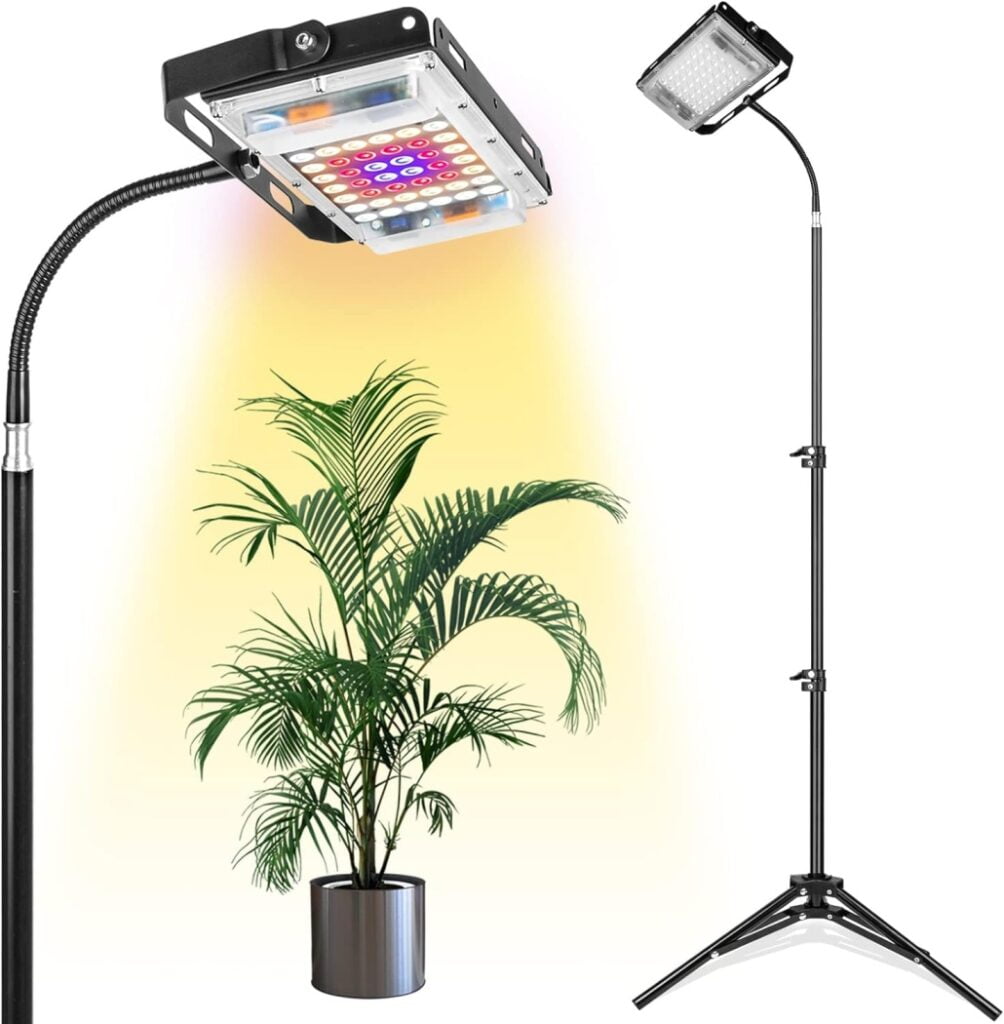
If we compare with the all grow lights we tested, the LBW Grow Light outshines as being the most universal. Because of its full spectrum lighting, flexible tripod, and adjustable arm, this grow light delivers the right dose of light for different stages of bonsai growth, from pre-bonsai to mature. We put the tripod on a tabletop for our testing and set it as our Carmona, elm, and maple bonsai grew, the bonsai was thriving.
While you can’t change the red, blue, warm, white, and cold white bulbs separately, we think it’s easy to adjust the six brightness ranges and set a timer for 4, 6, or 8-hour gaps on the controller for the whole unit. Plus, the light is also available with hardware, you can hang the lamp from the ceiling as well.
Pros:
Adjustable stand.
Timer and light range settings.
Full spectrum lighting.
Can work as hanging hardware if required.
Cons:
Can’t change particular light bulbs.
2) Soltech Solutions Large Grow Light (Best For Decoration)
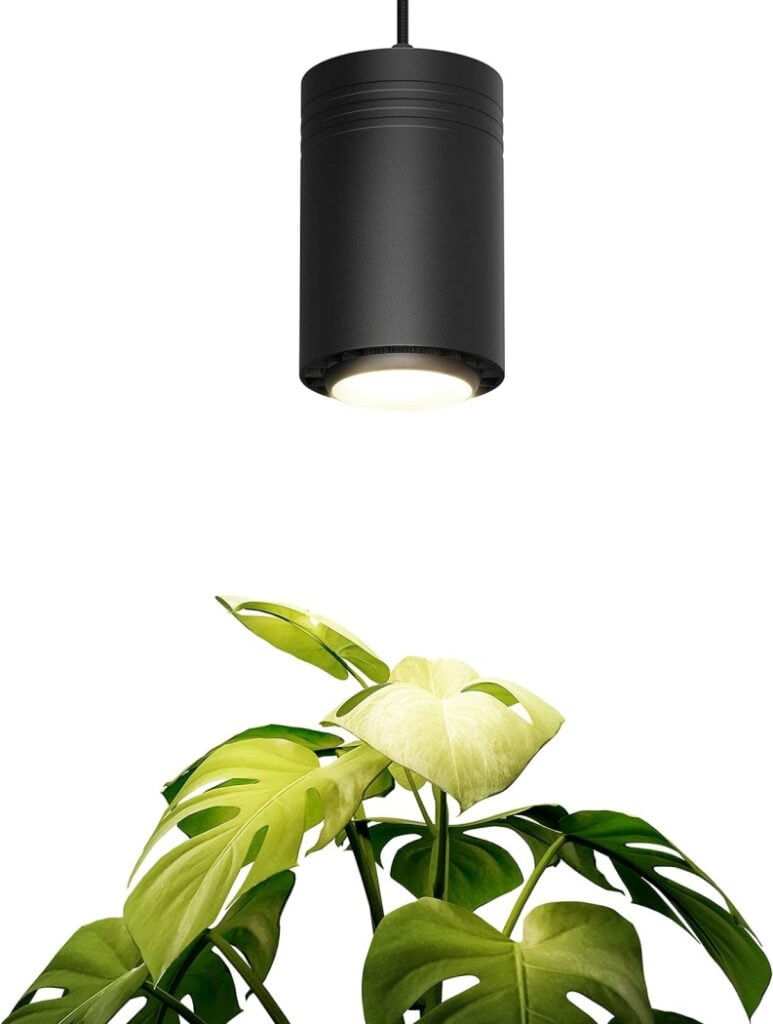
Hanging grow lamps allows you to save room while delivering light for a group of bonsai plants. But they can be tough and time-consuming for the setting, and occasionally, they don’t incorporate well with your indoor decoration. While studying the Bloomscape Soltech Aspect Grow Light, we discovered it to be a great hanging option because it’s effortless to set there and looks like a normal light fixture, so it incorporates even in small areas.
Pros:
Blend into the decor.
Easy to set up.
12-hour timer.
Gives bright, natural light.
Cons:
The analog timer isn’t as easy to operate as digital.
3) Gardener’s Supply Company Stack-n-Grow Lights System (Best Stackable)
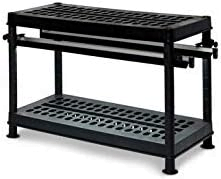
If you like to start your bonsai garden with seedlings indoors but have limited space, the LED Stack-n-Grow Lights System by Gardener’s Supply Company is a superb choice. During testing. We adored that this small, stackable structure didn’t take up much floor area, and let us keep counters and other areas free, and more significantly, our new plants thrived under the full-spectrum lighting during the entire 6 months of reviewing.
Pros:
Saves a lot of space.
Expandable.
Great for delicate tree species.
Cons:
More challenging to change the lighting as plants grow.
4) Mars Hydro LED Grow Light (Best for large bonsai)
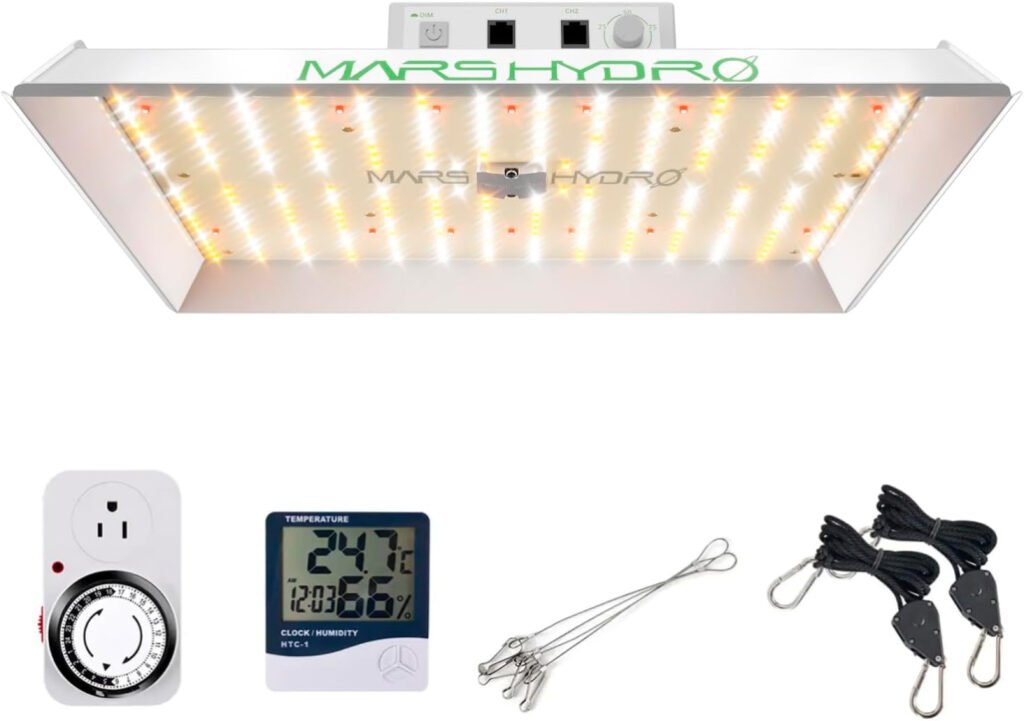
While reviewing the Mars Hydro LED Grow Light, we saw that it’s a great choice for large bonsai plants with little to no natural light reach. We love that numerous fixtures (bought individually) can be attached using the same control panel, also famous as daisy chaining.
Setting it up does need several steps, but it simply took us 10 minutes to set it up. But, it might take longer, relying on your knowledge of mounting fixtures and if you are linking more than one.
Pros:
Ideal for large trees.
Can connect numerous lights together on the exact circuit.
Brightness settings.
Cons:
The fixture doesn’t incorporate well in small areas.
No built-in timer.
5) GooingTop LED Grow Light (Best tabletop lamp)
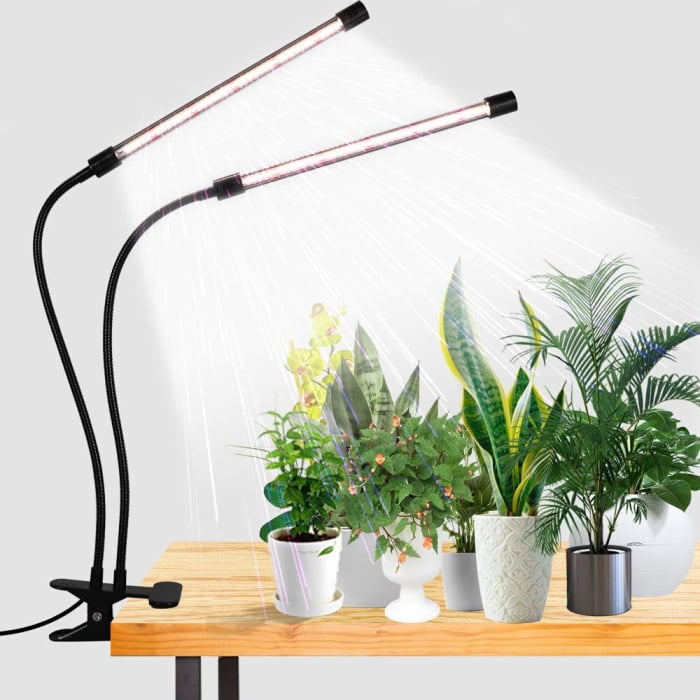
Clip-on grow lights are an ideal choice for bookshelves and tables that lack room. The GooingTop LED Grow Light is our ultimate choice in this type because it’s ready straight out of the box, comes with two lamps on adjustable arms that can wrap several bonsai, and is easy to modify as your bonsai grows.
Pros:
Two adjustable lights.
Simple setup.
Precise timer with three settings.
Light isn’t as intense as other choices
Cons:
Only comes with the clip-on choice.
Selecting the best bonsai grow lights for you relies on what you require for your condition and layout. Normally, I’d suggest choosing an LED grow light because LED has more benefits and rarer drawbacks than the other kinds of light available.
When it comes to model and design, there are tons of grow light choices to select from. Based on your layout, the best grow light for you may be different than the best grow light for somebody else.
